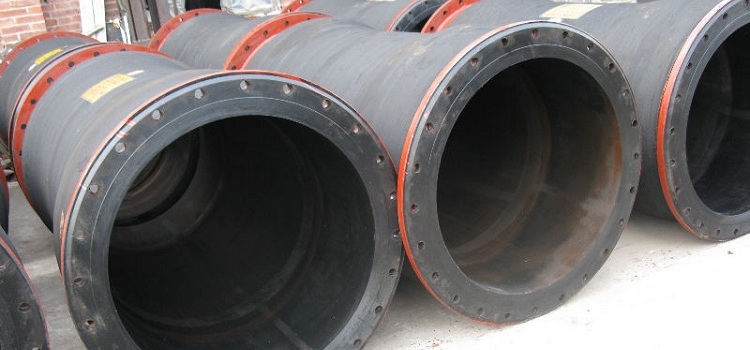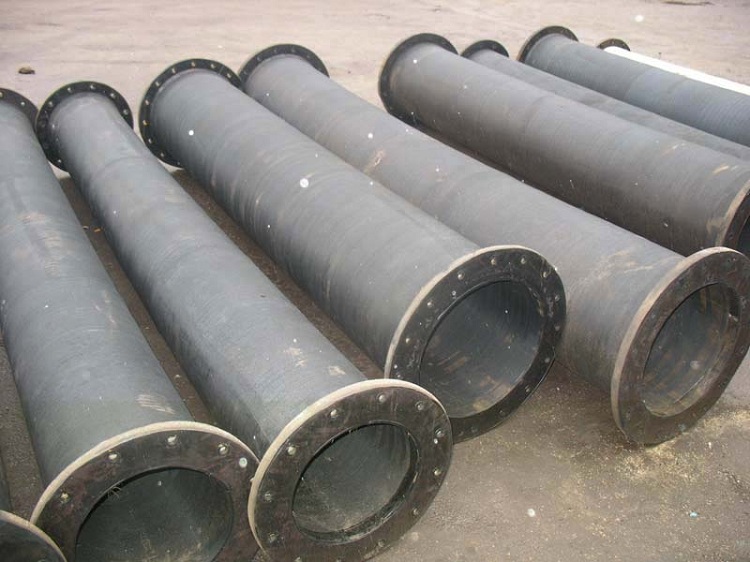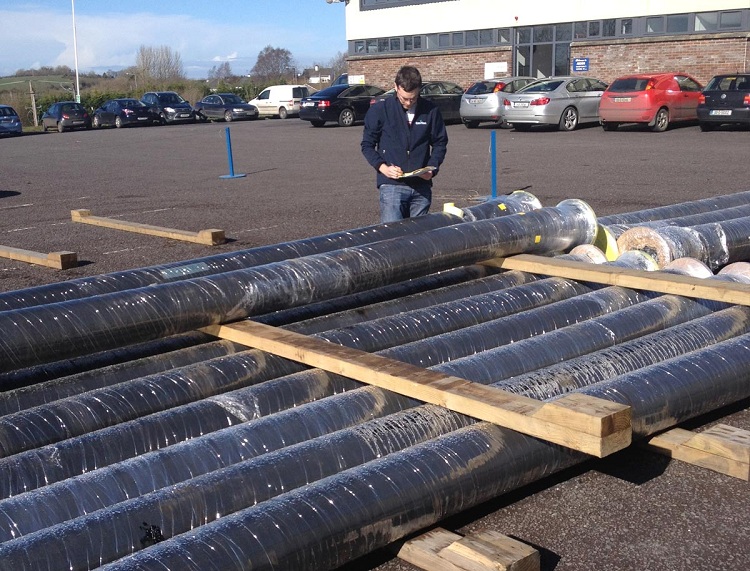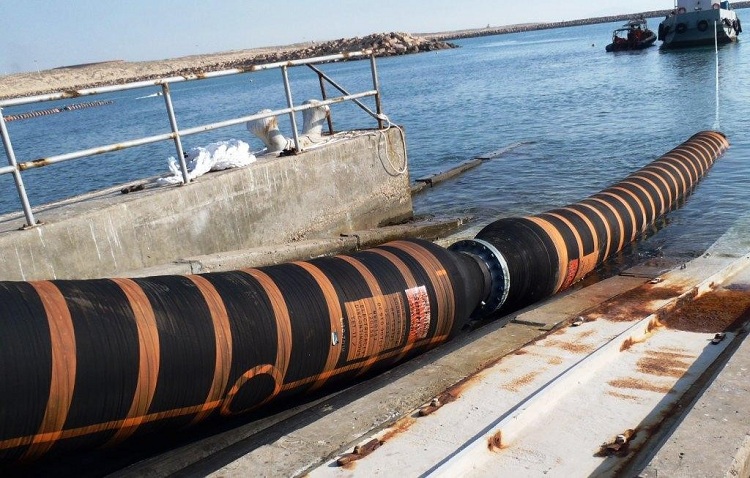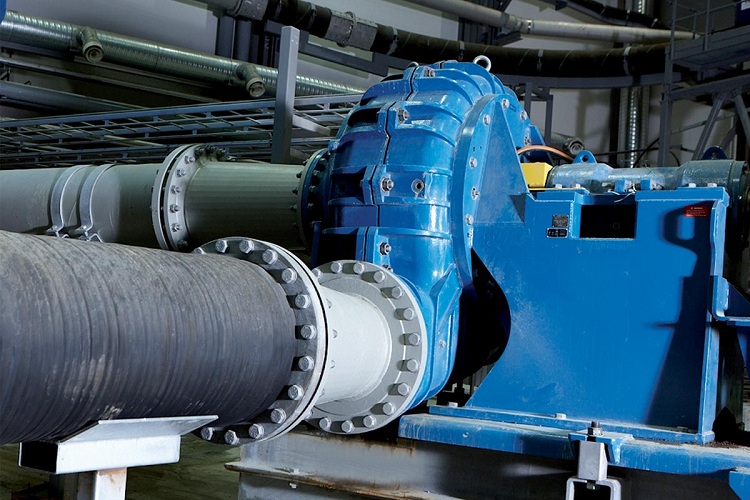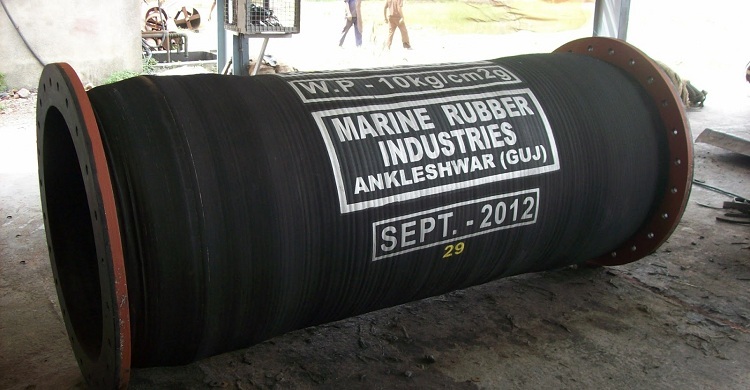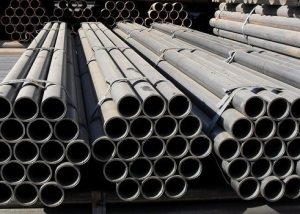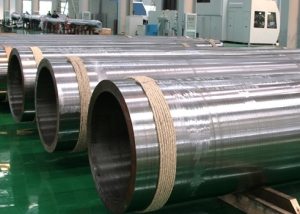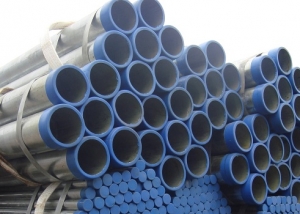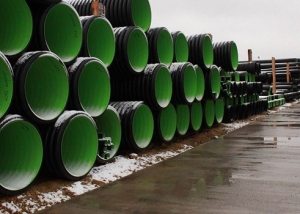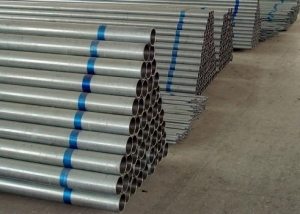Three-layer rubber pipe - a product of technological development, created on the basis of a conventional rubber hose. The main distinguishing feature of the new product was its rigidity. Rigid three-layer products, having lost significantly in flexibility, are used in areas where conventional rubber hoses were unsuitable. They replace plastic pipes or rubberized steel structural elements in pipelines.
Content
Three Layer Rubber Pipe Design
The design of a thick-walled rubber pipe is a composition composed of three elements:
- The core. The core, in fact, is the rubber part of the product. Rubber is selected for him wear-resistant and successfully withstanding the impact of an aggressive environment. A rubber pipe has a huge advantage over a rubberized product made of steel, in the sense that its rubber layer never peels off. The reason is that the core is seamless, seamless.
- Tin braid. Braid adds rigidity to the product. Even with a considerable length, it does not sag under its own weight and remains stable.
- The outer layer. The diameter of the product is limited by a high-strength textile cord used as a coating. Cord does not allow excessive stretching and breaking.
The three-layer composition of the product is much more complicated than that of a jack pipe, which is made in the form of a hollow cylinder of hard rubber, which extinguishes the contact of massive structural elements. A variant of such a product is a more rigid structure, which is reinforced with a cord.
Range of three-layer rubber pipes
Three types of three-layer rubber pipes with different purposes are produced:
- GUR1. The thick-walled construction is equipped with a wear-resistant elastic inner layer. Products have sufficient rigidity. They are used to carry out the movement of rocks belonging to large fractions, for example, gravel. Transportation of finer gravel is also possible. It is allowed to lay a rubber pipeline on a water surface, provided that support is provided in the form of a pontoon or floats. The inner diameter of GUR1 can be from 200 mm to 1200 mm.
- GUR2. The thickness of the inner layer made of hard, acid-resistant rubber is 8 mm. The products are intended for transportation of working media characterized by increased aggressiveness and causing corrosion. Values of internal diameter range from 65 mm to 600 mm.
- GUR3. The thickness of the inner wear-resistant elastic layer is 12 mm. The size of the internal section is from 65 mm to 300 mm. Bulk materials such as cement and sand with abrasive properties are transported via GUR3.
All types of products are designed for a working medium pressure of 10 bar, while pipes with the smallest diameter can withstand four times higher pressure.
Note! It is possible to use all three types of products for transporting water. This manifests a remarkable property of rubber pipelines that do not need to compensate for thermal expansion. This allows the use of simplest static supports for the pipeline.
Properties and application of rubber pipes. Installation
All three types of three-layer rubber pipes share common properties arising from the characteristics of the base material from which they are made. These common properties boil down to:
- elasticity and ability to repay shock loads;
- plasticity, which is reflected in the process of operation on the performance of involuntary movements and bends under the influence of the working environment, allowing free transportation;
- wear resistance of the inner surface, successfully resisting abrasion.
In addition to the listed beneficial properties, GUR2 is inherent resistant to aggressive environments, for the transportation of which it is intended.
Due to these properties, rubber three-layer pipes are used:
- during the extraction and transportation of substances with abrasive properties - sand, gravel, crushed stone, cement;
- for the needs of the chemical industry, providing transportation of aggressive acidic and alkaline environments, solutions;
- for the needs of the food industry;
- in desalination plants;
- during the construction of cold water supply systems;
- in water supply systems of private households.
Installation of three-layer rubber pipes, regardless of type, diameter and length, is carried out using fittings that are equipped with a specific flange mount, O-ring and swivel mechanism. The installation of rubber pipes is carried out on the following elements:
- fitting with a sawtooth nipple using clamps;
- rubber sleeve with bushings.
To connect rubber pipes, a considerable number of connecting elements are intended:
- collectors;
- compensators;
- bends;
- branch pipes;
- converters;
- tees;
- flanges;
- elastic inserts.
The increased flexibility of these connecting elements allows to do without fittings. During installation, this feature is extremely convenient, since the thermal expansion that causes length deviations is compensated, as are the vibrations in the compensators.
The installation does not require the use of additional seals, since the tightness is ensured by rings mounted in the connecting elements.
Important! When connecting rubber pipes for water using steel flanges, tighten the screws evenly crosswise, checking that the flange does not tip over.
The adapters are connected in a similar way.
Use of corrugated rubber pipe
Corrugated pipe with a rubber core is used in pumping liquid media, fertilizers and seeds, as well as in the construction of connecting elements. The corrugation reinforced with a steel spiral becomes much tougher. It is used in systems providing suction / discharge, with considerable mechanical loads.
Corrugated rubber pipe has a rather complicated structure, consisting of:
- two rubber layers;
- two layers of textile braid;
- metal spiral;
- additional textile or rubber layer.
Reinforced hoses (sleeves) are divided into five classes:
- B and B (A) - antistatic. For petroleum products.
- B - for water, drinking and technical.
- G - for gases.
- P - for slightly acidic solutions, drinking and industrial water, alcohol liquids.
- Щ - for weak solutions of acids, inorganic alkalis.
Marking on such products is applied with indelible paint or relief with a longitudinal strip. The marking contains an indication of class, group, inner diameter, working pressure and possibilities of use in a particular climate.
Pipe laying in a ditch for drainage
Corrugated rubber pipes for drainage are equipped with perforations, perforated or slotted, located along the entire surface of the product to collect groundwater. Silting and clogging of the holes is prevented by a geotextile (geotextile) shell. Stacking is not carried out to a depth exceeding three meters.
Corrugated drainage pipe is installed taking into account such factors:
- depths of the foundation of buildings;
- groundwater level;
- soil freezing level;
- terrain.
Important! The drainage pipe is laid in a ditch with a slope in the direction of the intended discharge of at least 0.5 - 1 cm per linear meter. On soils with low water resistance, the slope is increased.
Before laying the pipes, a layer of sand or gravel about ten centimeters thick is poured onto the rammed bottom of the ditch. At the end of the installation, backfill is made, creating a permeable layer around the drain. Turns are carried out in smooth semicircles so as not to impede the drain. For the same reason, sagging of individual sections should be avoided.
Modern rubber pipes will be more precisely called rubber products, their design has become more complicated and has become much more reliable. The combination of the inherent flexibility and elasticity of rubber with the advantages of other materials allows you to get pipes that are unpretentious, reliable and durable.
